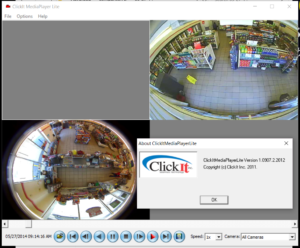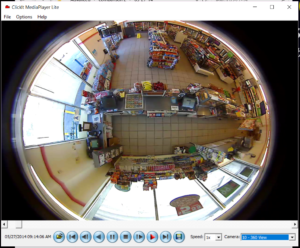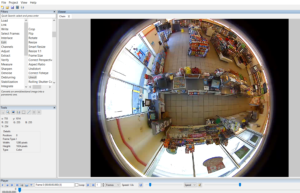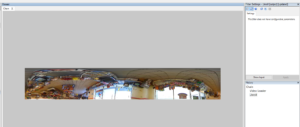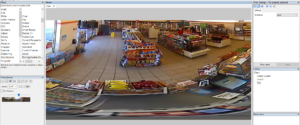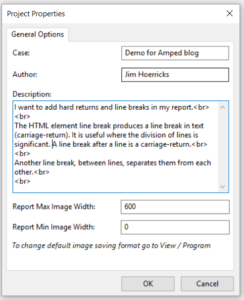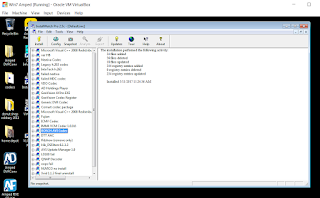This blog is no longer active and is maintained for archival purposes. It served as a resource and platform for sharing insights into forensic multimedia and digital forensics. Whilst the content remains accessible for historical reference, please note that methods, tools, and perspectives may have evolved since publication. For my current thoughts, writings, and projects, visit AutSide.Substack.com. Thank you for visiting and exploring this archive.
Featured Post
Welcome to the Forensic Multimedia Analysis blog (formerly the Forensic Photoshop blog). With the latest developments in the analysis of m...
Friday, May 26, 2017
Daubert or Frye?
Part of doing the work for Forensic Multimedia Analysis is the eventual testimonial experience. Depending on the state in which you work, or the state in which the case is being heard, different rules will apply.
In my state - Nevada, for example - to the extent that Daubert espouses a flexible approach to the admissibility of expert witness testimony, the Supreme Court of Nevada has held it is persuasive. Higgs v. State, 222 P.3d 648, 126 Nev. Adv. Rep. 1, 2010 Nev. LEXIS 1 (Nev. 2010).
California, however, is a Frye State. People v. Leahy, 882 P.2d 321 (Cal. 1994). Rejected Daubert standard.
Next week, I'll be teaching in Rhode Island. RI R. Evid. Art. VII, Rule 702 adapted the post-Daubert standards determined by the Supreme Court.
For a quick check of your state's rules, click here.
Thursday, May 25, 2017
FFT for video - yes, video
Eliminating repeating pattern noise from images has been a pain for forensic analysts for quite some time. There are tons of freeware apps and plug-ins ranging in price from inexpensive to cost prohibitive Some of their limitations include: they only work on images, their reliability is spotty, you must document your work without quite knowing how the tool is doing what it's doing.
Imagine having to account for the frequency spikes in each frame of video. This has been the barrier to using FFT tools to fix noise in video. Until now ...
Enter Amped FIVE (Axon Five*). FFT has been a part of the tool set for quite some time. Last year, we added Automatic Selection functionality. Auto Selection Mode, automatically identifies frequencies to remove without user intervention. What's the big deal? VIDEO!!!
Check out the video below to see FFT with Auto Selection Mode in action.
For the most part, it's a one-click fix.
As folks buy cheap CCTV systems meant for an indoor installation and place the cameras and cables outside (in the weather), the components degrade, corrode, and create all sorts of problems for the vide signal. With our tools, including FFT with Auto Selection, you can restore the video accurately. Then, when finished, you'll find that our reporting functionality has kept track of your activities. Just generate the report. The ease of use of our reporting tool is second to none.
*The Axon Forensic Suite tools are powered by Amped Software technologies.
Imagine having to account for the frequency spikes in each frame of video. This has been the barrier to using FFT tools to fix noise in video. Until now ...
Enter Amped FIVE (Axon Five*). FFT has been a part of the tool set for quite some time. Last year, we added Automatic Selection functionality. Auto Selection Mode, automatically identifies frequencies to remove without user intervention. What's the big deal? VIDEO!!!
Check out the video below to see FFT with Auto Selection Mode in action.
For the most part, it's a one-click fix.
As folks buy cheap CCTV systems meant for an indoor installation and place the cameras and cables outside (in the weather), the components degrade, corrode, and create all sorts of problems for the vide signal. With our tools, including FFT with Auto Selection, you can restore the video accurately. Then, when finished, you'll find that our reporting functionality has kept track of your activities. Just generate the report. The ease of use of our reporting tool is second to none.
*The Axon Forensic Suite tools are powered by Amped Software technologies.
Wednesday, May 24, 2017
Unroll 360 degree camera views with one click
In this case, the ClickIt DVR allows the user to segregate camera views and output individual views as separate files. But, you're still left with that hideous 360 degree camera view.
Not to worry, we've got you covered with Amped FIVE. There's a little gem of a filter that's been in the Edit filter group for a while now. It's called Unroll.
Unroll is one of the many "easy buttons" that are found in Amped Five. Let's take a look at what happens when you activate this powerful filter.
Upon activation of the Unroll filter, the file is unrolled into a panorama. It might be upside down / backwards. Don't worry, that's an easy fix as well. Check out the Flip filter, also in the Edit filter group. In this case, I flipped the file both horizontal and vertical (using the signage in the scene to judge the correct orientation).
In all, from conversion of format to a correctly oriented view, this fix took less than 2 minutes. That is the power of FIVE.
If you'd like more information about tools or training offerings, contact me today.
Tuesday, May 23, 2017
A report formatting tip for FIVE
One of our customers called in to ask about the formatting of the reports that are generated in FIVE. Specially, she wanted to know why FIVE mashed all the sentences together and didn't allow her to format the Description field into paragraphs. I explained that it does. It's done in the Project Properties dialog box. Here's how:
Notice the line break in the text. That's how it's done. If you want a carriage return / line break, add the break at the end of your line. If you want a space in between lines, add one more as shown in the graphic above.
Then your report will look like this:
I would usually just add the question to be answered by the file and any scale or other necessary notes.
Hopefully, this tip helps you better organize your report's Description field.
Notice the line break in the text. That's how it's done. If you want a carriage return / line break, add the break at the end of your line. If you want a space in between lines, add one more as shown in the graphic above.
Then your report will look like this:
I would usually just add the question to be answered by the file and any scale or other necessary notes.
Hopefully, this tip helps you better organize your report's Description field.
Monday, May 22, 2017
Resourcefulness
Say what you want about him, Tony Robbins knows how to motivate people. Here's one of my favorite Robbins quotes: "Everything you people have told me; I didn't have the technology, I didn't have the right contacts, I didn't have the time, I didn't have the money. Those are resources. And so you're telling me, 'I failed because you didn't have the resources.' And I'm telling you what you already know. Resources are never the problem. It's a lack of resourcefulness. This is why you failed. Creativity, decisiveness, honesty, passion, love, these are human resources. When you engage these resources, you can get any other resources on earth. Resourcefulness is the ultimate human resource. If you don't have what you want, stop telling yourself a story; you don't have the money, you don't have time ... that's BS. It's because you haven't committed yourself where you would burn your boats. If you want to take the island, burn your boats. You will take the island. Because people, when it's either die or succeed, will tend to succeed."
Think about that for a moment.
As conversations in the media revolve around body worn cameras, and police agencies try to budget for not only the cameras but also the storage, private citizens and businesses are generating digital multimedia evidence (digital CCTV systems, mobile devices, on-line sources, and etc.) at a rate of almost 10:1 vs. BWC files. Yes, for every file generated by a body worn camera, roughly 10 digital CCTV files are being generated, retrieved, processed, and stored.
Agencies are investing lots of money around BWC. What about the retrieval, processing, analysis, and storage of digital multimedia evidence? If it accounts for 10x the amount of evidence files, shouldn't it at least get the same funding level as BWC? Sadly, it doesn't.
In my years in LE, I was able to find some very creative ways to kit out my lab. There's money (resources) in a lot of places. You not only have to know where to look, you have to know how to convince the people controlling those funds of the need to share it with you.
Think about that for a moment.
As conversations in the media revolve around body worn cameras, and police agencies try to budget for not only the cameras but also the storage, private citizens and businesses are generating digital multimedia evidence (digital CCTV systems, mobile devices, on-line sources, and etc.) at a rate of almost 10:1 vs. BWC files. Yes, for every file generated by a body worn camera, roughly 10 digital CCTV files are being generated, retrieved, processed, and stored.
Agencies are investing lots of money around BWC. What about the retrieval, processing, analysis, and storage of digital multimedia evidence? If it accounts for 10x the amount of evidence files, shouldn't it at least get the same funding level as BWC? Sadly, it doesn't.
In my years in LE, I was able to find some very creative ways to kit out my lab. There's money (resources) in a lot of places. You not only have to know where to look, you have to know how to convince the people controlling those funds of the need to share it with you.
Monday, May 15, 2017
In praise of virtual machines and controlled installations of codecs and players
It's been quite a while since I've posted in the this space. I've been over on LinkedIn and the Amped Software blog. I just wanted to take a moment to mention what I've been up to lately.
Last month in the Advanced Processing Techniques class, controlled installation of codecs and players in a virtualized environment was one of the topics of discussion. You really get to see what havoc is wrought against your OS installation by controlling the installation and tracking the changes.
I rather prefer not to have to install players and codecs. That's the beauty of proxy files and Amped DVRConv / Amped FIVE. But when I have to install them, having the ability to work in virtual space is huge. Our licensing model means that the USB dongle can easily be accessed from within the space - making it easy to work with any of the Amped Software tools in virtualized environments.
Next month, I'll be presenting our tools at the Axon Accelerate Conference. You can click on the link to register. It's going to be a great event. Then, it's back to the office for more training sessions.
Enjoy.
Last month in the Advanced Processing Techniques class, controlled installation of codecs and players in a virtualized environment was one of the topics of discussion. You really get to see what havoc is wrought against your OS installation by controlling the installation and tracking the changes.
I rather prefer not to have to install players and codecs. That's the beauty of proxy files and Amped DVRConv / Amped FIVE. But when I have to install them, having the ability to work in virtual space is huge. Our licensing model means that the USB dongle can easily be accessed from within the space - making it easy to work with any of the Amped Software tools in virtualized environments.
Next month, I'll be presenting our tools at the Axon Accelerate Conference. You can click on the link to register. It's going to be a great event. Then, it's back to the office for more training sessions.
Enjoy.
Subscribe to:
Posts (Atom)

